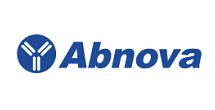XIAP & ACVR1B Protein Protein Interaction Antibody Pair



* The price is valid only in USA. Please select country.
-
More Files
- More Functions
-
Specification
Product Description
This protein protein interaction antibody pair set comes with two antibodies to detect the protein-protein interaction, one against the XIAP protein, and the other against the ACVR1B protein for use in in situ Proximity Ligation Assay. See Publication Reference below.

Reactivity
Human
Quality Control Testing
Protein protein interaction immunofluorescence result.
Representative image of Proximity Ligation Assay of protein-protein interactions between XIAP and ACVR1B. HeLa cells were stained with anti-XIAP rabbit purified polyclonal antibody 1:1200 and anti-ACVR1B mouse monoclonal antibody 1:50. Each red dot represents the detection of protein-protein interaction complex. The images were analyzed using an optimized freeware (BlobFinder) download from The Centre for Image Analysis at Uppsala University.
Supplied Product
Antibody pair set content:
1. XIAP rabbit purified polyclonal antibody (100 ug)
2. ACVR1B mouse monoclonal antibody (40 ug)
*Reagents are sufficient for at least 30-50 assays using recommended protocols.Storage Instruction
Store reagents of the antibody pair set at -20°C or lower. Please aliquot to avoid repeated freeze thaw cycle. Reagents should be returned to -20°C storage immediately after use.
-
Applications
In situ Proximity Ligation Assay (Cell)
-
Gene Info — ACVR1B
Entrez GeneID
91Gene Name
ACVR1B
Gene Alias
ACTRIB, ACVRLK4, ALK4, SKR2
Gene Description
activin A receptor, type IB
Omim ID
601300Gene Ontology
HyperlinkGene Summary
Activins are dimeric growth and differentiation factors which belong to the transforming growth factor-beta (TGF-beta) superfamily of structurally related signaling proteins. Activins signal through a heteromeric complex of receptor serine kinases which include at least two type I (I and IB) and two type II (II and IIB) receptors. These receptors are all transmembrane proteins, composed of a ligand-binding extracellular domain with a cysteine-rich region, a transmembrane domain, and a cytoplasmic domain with predicted serine/threonine specificity. Type I receptors are essential for signaling, and type II receptors are required for binding ligands and for expression of type I receptors. Type I and II receptors form a stable complex after ligand binding, resulting in phosphorylation of type I receptors by type II receptors. This gene encodes activin A type IB receptor, composed of 11 exons. Alternative splicing and alternative polyadenylation result in 3 fully described transcript variants. The mRNA expression of variants 1, 2, and 3 is confirmed, and a potential fourth variant contains an alternative exon 8 and lacks exons 9 through 11, but its mRNA expression has not been confirmed. [provided by RefSeq
Other Designations
activin A receptor, type II-like kinase 4|activin A type IB receptor|activin receptor-like kinase 4|serine(threonine) protein kinase receptor R2
-
Gene Info — XIAP
Entrez GeneID
331Gene Name
XIAP
Gene Alias
API3, BIRC4, ILP1, MIHA, XLP2
Gene Description
X-linked inhibitor of apoptosis
Gene Ontology
HyperlinkGene Summary
The protein encoded by this gene is a member of a family of proteins which inhibit apoptosis through binding to tumor necrosis factor receptor-associated factors TRAF1 and TRAF2. This protein inhibits apoptosis induced by menadione, a potent inducer of free radicals, and ICE. It also inhibits at least two members of the caspase family of cell-death proteases, caspase-3 and caspase-7. [provided by RefSeq
Other Designations
OTTHUMP00000023975|OTTHUMP00000196392|apoptosis inhibitor 3|baculoviral IAP repeat-containing 4|baculoviral IAP repeat-containing protein 4
-
Interactome
-
Pathway
-
Disease
- +1-909-264-1399
+1-909-992-0619
Toll Free : +1-877-853-6098 - +1-909-992-3401
- sales@abnova.com
















